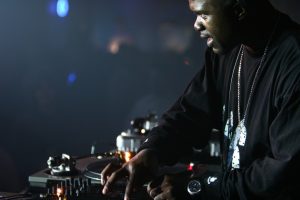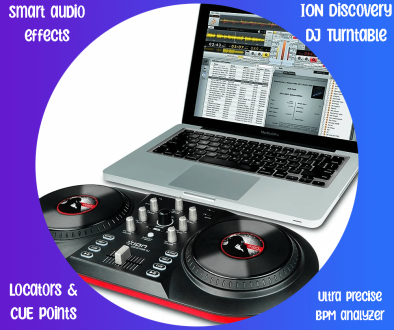How To Scratch Vinyl Like A Pro
Scratching vinyl is a DJ technique that has been around since the early 1980s when the method became popular in the New York hip hop scene. Today, vinyl scratching is found in many music genres from pop to alternative rock, on records and in clubs. DJs that scratch vinyl are sometimes also called turntablists.
What is vinyl scratching?
When DJs scratch records, they use their hands to manipulate a vinyl disc back and forth to repeat a certain sound or effect, resulting in an unmistakable ‘scratching’ sound. Almost any part of a record can be scratched, from individual drum beats to vocal samples.
The history of turntablism

Hip hop artists emerging from the New York scene in the early 1980s are credited with the growth of vinyl scratching. DJ Grand Wizard Theodore is said to have invented the technique when his mother came to scold him for playing records loudly in his bedroom. Taking his eyes off the decks, he moved a record back and forth while talking to his mother and was later intrigued by the unique sound. After Grand Wizard Theodore performed his new discovery at a party, the technique took off and became synonymous with hip hop music.

Another artist, Christian Marclay, working outside of the hip hop genre, is also believed to be one of the first musicians to scratch records. Marclay created what he termed ‘collages’ from gramophone records and turntables.
The technique involved gluing together different portions of vinyl records and scratching them to create unique sounds. Developing the format in the mid 1970s, Marclay has been called the inventor of turntablism.
Outside of the hip hop scene, scratching samples are often heard on records and record scratching is occasionally performed ‘organically’ on tracks such as Nelly Furtado and Linkin Park’s Papercut.
Anyone can learn to scratch records with no prior musical training or experience. To get started, you need some basic equipment: a turntable and some vinyl records.
Choosing a turntable
You can scratch vinyl on any turntable, even an old analogue model or basic USB version, many of which can be picked up online for less than $100. A standard turntable will let you play and scratch a record, but won’t allow you mix different records or tinker with sound levels.
You can buy CD turntables cheaply and emulate the vinyl scratching effect by scratching CDs instead of records. CDs are easier to work with because you can burn whatever tracks or samples you like onto them, but many DJs believe that a true turntablist only scratches vinyl records.
A professional digital twin DJ turntable with mixers will cost over $500. These systems will have a crossfader and cue buttons that lets records get cued up by the DJ without the crowd hearing, allowing for seamless mixing and continuous music.
Digital vinyl systems (DVS) work with computer software to let the user manipulate music by using the physical interface of the vinyl turntable to transmit timecode information (analog audio signals) to a computer program. DVS convert analog signals to digital formats that can later be edited using software. Some countries require users to have a Digital DJ Licence to use DVS in a public performance space.
Picking the right record
Scratching can be performed and learned by using any vinyl record that fits the dimensions of your turntable. Second-hand stores and eBay are great places to hunt down cheap records, but scratching is easier to learn if you start with a sample record.
Remember that scratching can damage vinyl discs so beginners should use inexpensive and disposable records when practising.
How to scratch vinyl
Start by assembling your turntable and placing a vinyl record in position. Set the record spinning and place a finger (middle finger works best halfway between the centre and outer edge of the disc. Press down gently, without making the record stop completely, then move back and forth to create a scratch effect.
Once you’re comfortable with the feel and movement of the turntable, you can learn to queue up your sample.
Listen to your record and wait until you find a sample that you want to scratch. Note where the needle is resting and make a small line or stick tape in the centre of the record facing the direction of the needle. This technique is called ‘sample marking’. Over time, you will learn the position of your samples and be able to cue them up without using headphones.
There are many different scratching moves, but these 3 are the easiest to get started with:
Simple scratch (or Baby scratch) – simply move the record back and forth with the crossfader open.

Transformer scratch – move the record back and forth with your hand, but this time open and close the crossfader repeatedly.
Scribble scratch – leave the crossfader open and rapidly move the record back and forth.
If you would prefer starting off at an even easier level, then you can always try DJ hero on the playstation or xbox.



